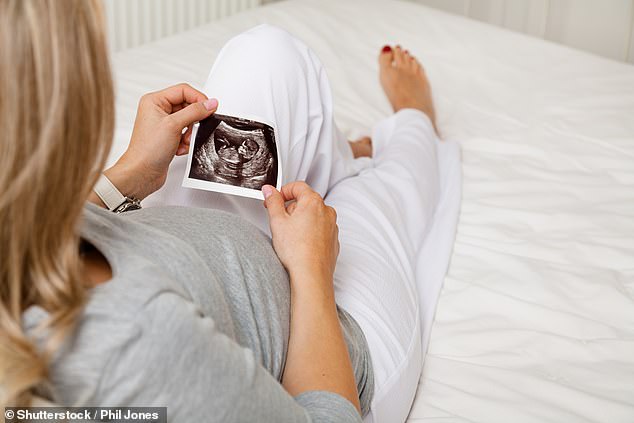Women are waiting too long to start IVF treatment, UK regulator warns – as average age rises above 35 for the first time despite declining chances of success






Women are starting IVF too late, with the average age of first conception being 35, the UK fertility watchdog has warned.
More and more women are choosing to freeze their eggs to delay motherhood, although the success rate decreases as they get older.
A report from the Human Fertilisation and Embryology Authority found that women who start fertility treatment are now typically six years older than women who have their first child naturally.
The trend, which is reducing the chances of IVF success, has been blamed on long NHS waiting lists, delays due to Covid and the prohibitive cost of private treatment.
This comes as more women turn to IVF to become single parents, with 3,548 attempts in 2022 compared to 1,953 in 2019 – an 83 percent jump.

The average woman had her first child at age 29 in 2022, six years younger than women undergoing IVF for the first time

Using previously frozen eggs and embryos to try for a baby years later is the fastest growing fertility treatment in the UK
The annual report shows that the number of same-sex partners increased by more than a third over the same period, from 1,628 to 2,200.
The use of previously frozen eggs and embryos to try to conceive a child years later is the fastest growing fertility treatment in the UK, the authors note.
Julia Chain, chair of the HFEA, warned that ‘fertility treatments are no guarantee of having a baby’.
She said: ‘IVF success rates continue to improve, but with the chance of having a baby declining rapidly with age, early access to fertility treatment is vital for those who need it.
‘Our data shows that the average age at which patients first start treatment is now almost six years older than the average age at which women in England and Wales have their first child.
‘It is important to seek advice about fertility issues so that if patients need treatment, they can get it as soon as possible and delays can be minimised.’
Despite the increasing age of patients, the percentage of pregnancies in which fresh embryos and the patient’s own eggs are transferred has increased from 21 to 31 percent between 2012 and 2022, thanks to advances in IVF.

Currently, fertility treatment has a success rate of up to 40 per cent. Around a third of IVF cycles among 35-year-olds resulted in a live birth in the UK in 2019. However, this dropped to just 4 per cent among those aged 44 and over

Although conception rates vary from woman to woman, statistics from the National Institute for Health and Care Excellence show that fertility levels generally begin to decline in the late 20s and then decline rapidly from the mid-30s onwards.

Data from the Office of National Statistics (ONS) shows that the average age of mothers in England and Wales has risen since the 1970s and is now 30.9 years old, according to the latest figures.
Women aged 18 to 34 had the highest pregnancy rate per embryo transferred, with a success rate of more than four in ten (42 percent).
Among 35 to 37 year olds, this percentage dropped to 34 percent, now the largest percentage of patients: 26 percent among 38 to 39 year olds, 16 percent among 40 to 42 year olds and nine percent among 43 and 44 year olds.
While these figures are all significant improvements, compared to 22, 17, 10 and 5 percent respectively, experts urged couples to start treatment earlier to maximize their chances of success.
Figures from the Office for National Statistics show that in 2022, women will have their first child at an average age of 29. That is six years younger than women who first underwent IVF treatment.
Egg freezing and storage also increased by 81 percent, from 2,576 cycles in 2019 to 4,647 in 2022 – five percent of the total.
The HFEA data shows that the average birth rate after IVF has also increased over the past decade, from 18 percent to a preliminary figure of 24 percent.
However, the percentage of IVF cycles funded by the NHS has fallen to 27 per cent, compared to four in ten ten years earlier.
In England, less than a quarter (24 percent) of attempts are funded by the NHS, compared with just over half (53 percent) in Scotland and a third (34 percent) in Wales.
Treatment numbers fell in most regions, with the East Midlands showing the largest drop in NHS-funded cycles from 1,451 to 753 (48 per cent) over the three-year period.
Yorkshire and the Humber saw the largest increase, from 1,009 cycles in 2019 to 1,183 in 2022.
Sarah Norcross, chief executive of the Progress Educational Trust (PET), said it was “shocking” that less than 25 per cent of fertility treatments in England are funded by the NHS.
She said: ‘For many women in England, it can take at least two years to access NHS-funded fertility treatment. And that’s before you take into account additional delays, such as if a woman has to lose weight to qualify.
‘Those who are not entitled to NHS treatment will be looking for ways to fund private treatment. They are not getting any younger in that time.’
‘It is therefore not surprising that the number of women undergoing IVF treatment for the first time is increasing on average.’
An NHS spokesman said: ‘While these decisions are legally the responsibility of local health commissioners, it is absolutely right that they provide equal access to services, tailored to the needs of people in their area.’




